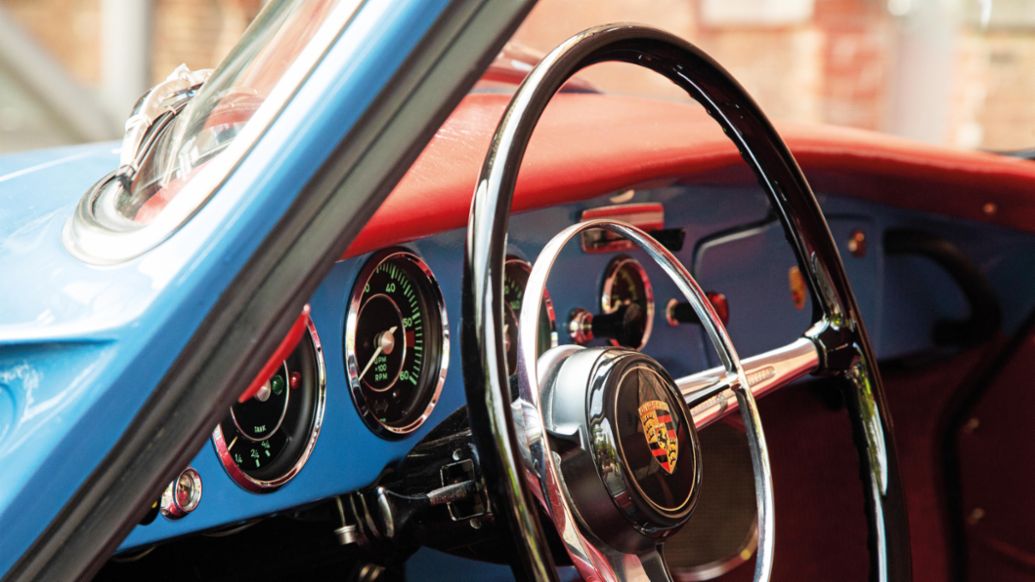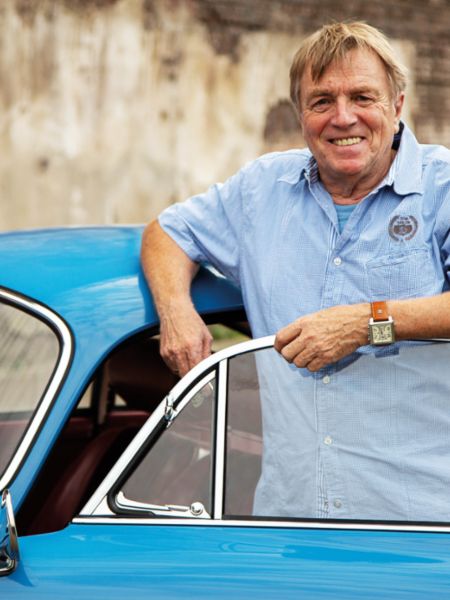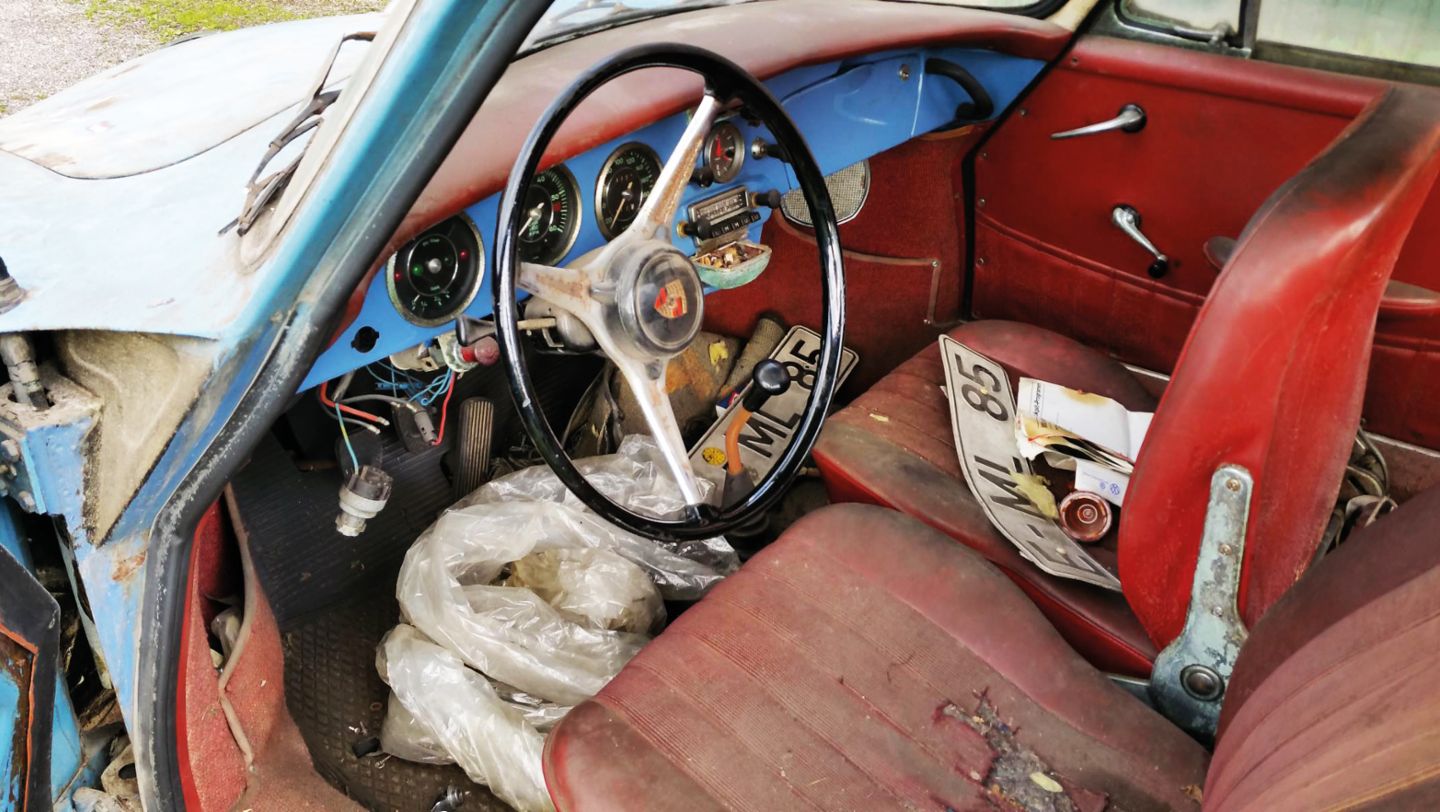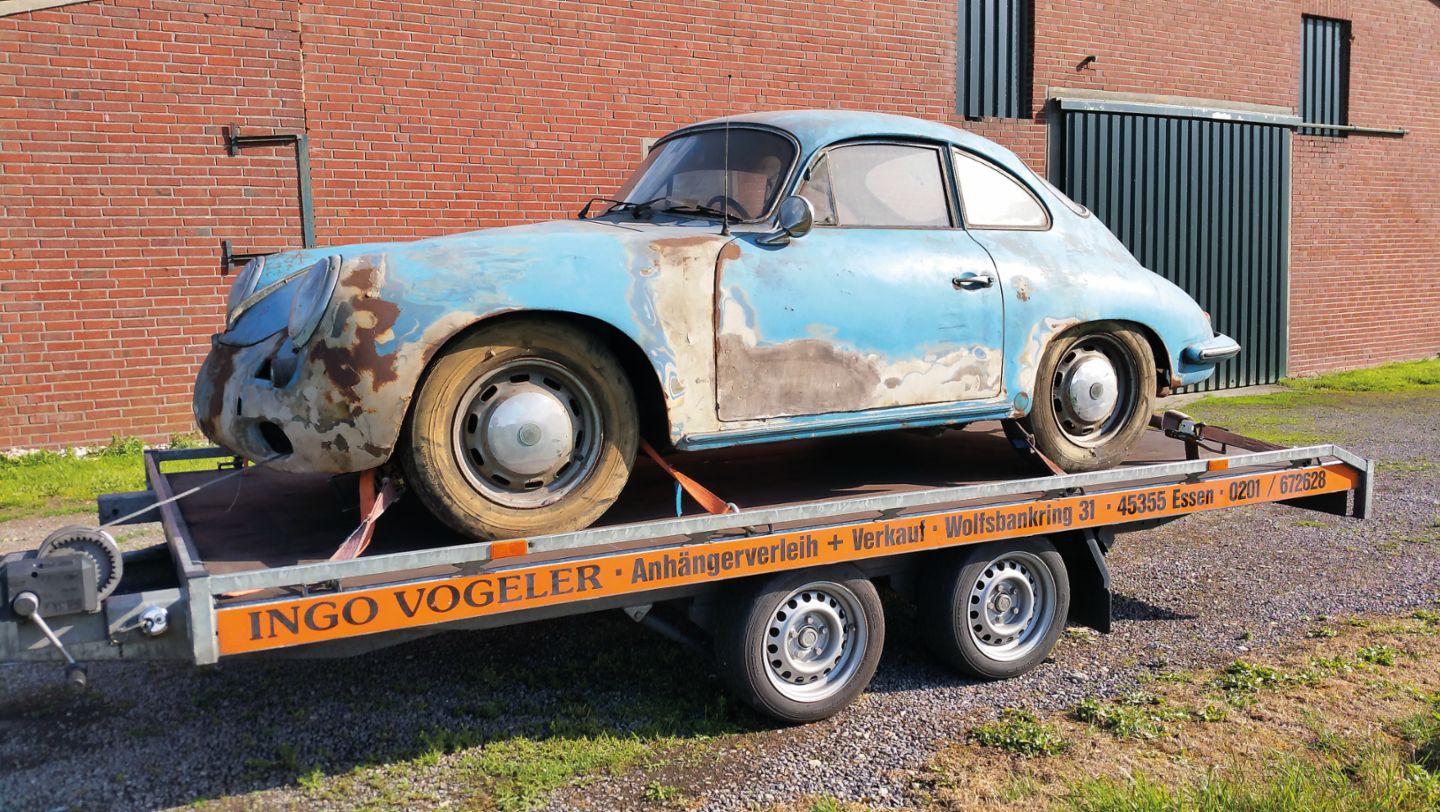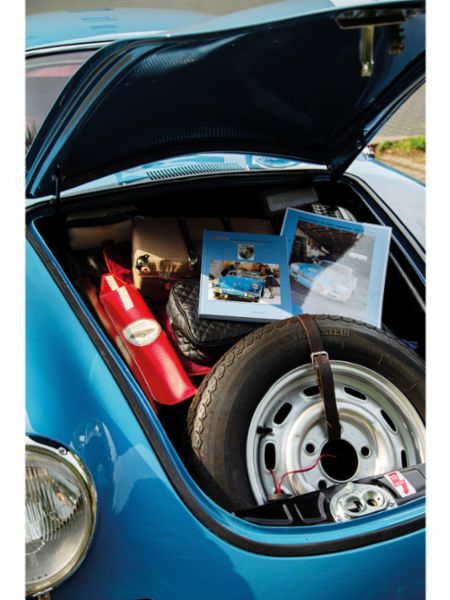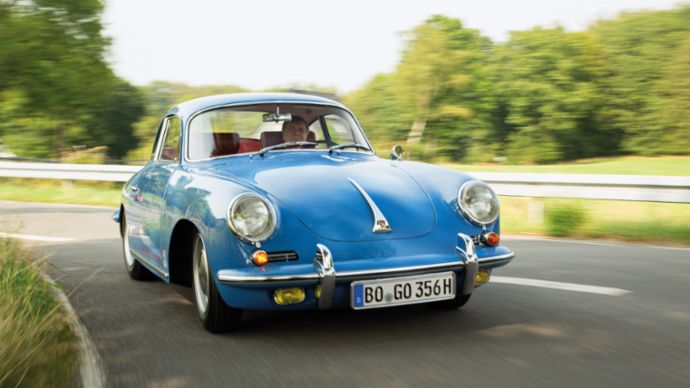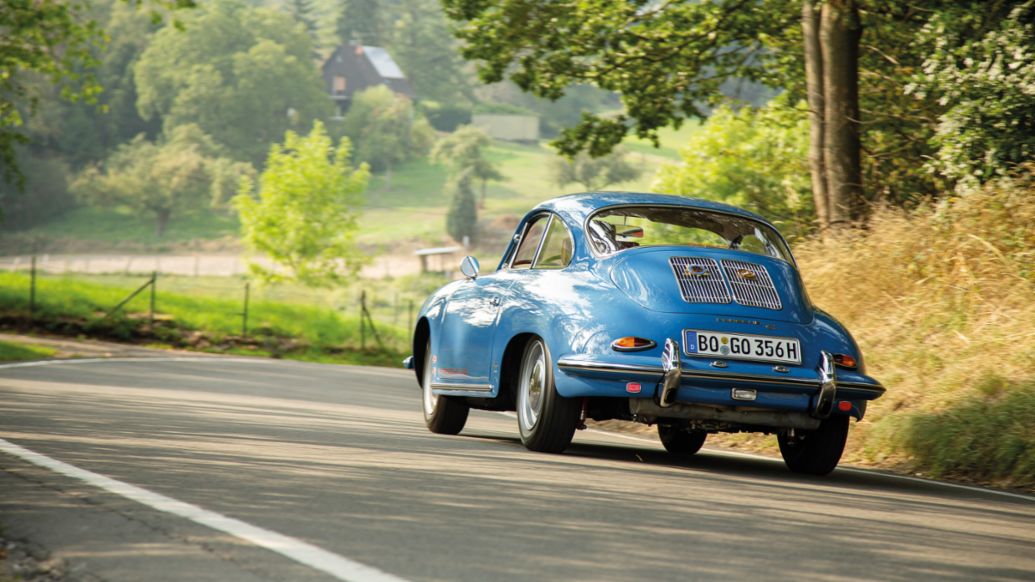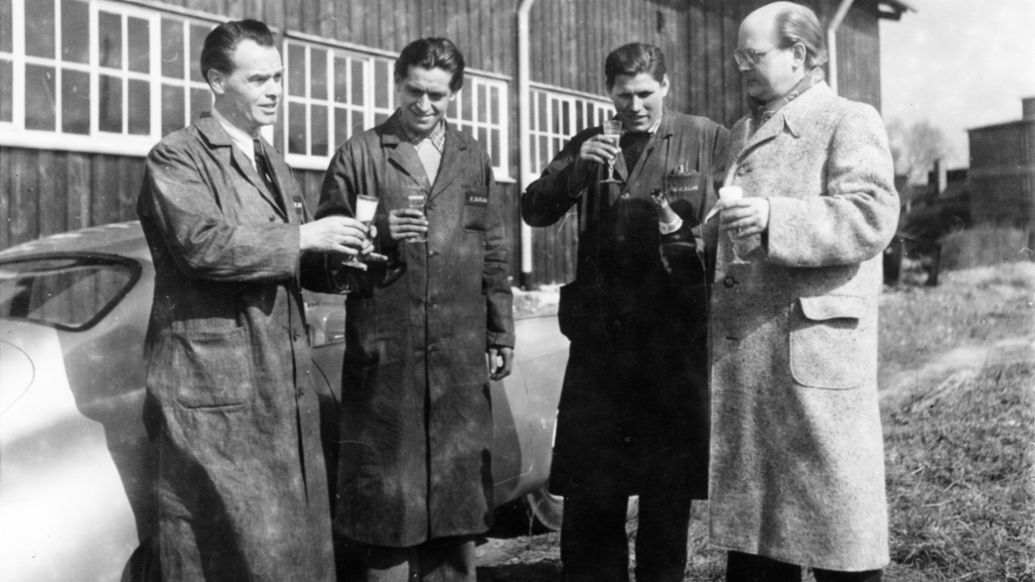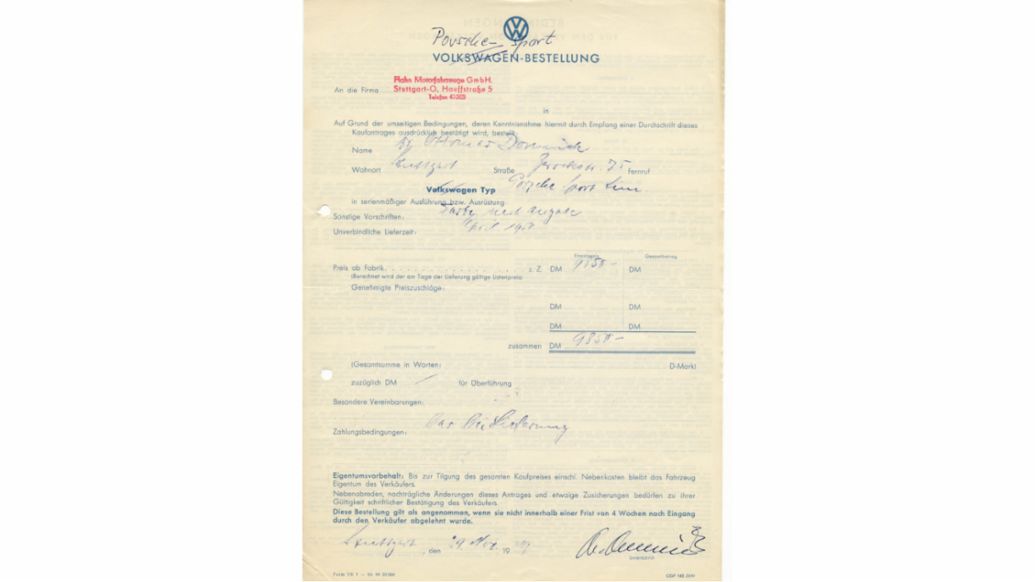 |
| Mercedes-Benz 280 C or 280 CE of the 114 model series, side view left, photo from 1971. |
Since 1993, when the cars in this market segment from Mercedes-Benz were assigned the E-Class designation, there has also been a tradition of top-of-the-range Mercedes-AMG engines. That performance and sports car brand had already made a name for itself with its high-performance versions of the sporty, elegant two-door models: the Mercedes-Benz 300 CE 6.0 AMG – the coupé version of the model nicknamed “The Hammer” – is regarded as particularly spectacular.
The “Stroke/8” model series was built from 1968 until 1976 and the successors of the 123 model series delighted fans from 1977 to 1985. The 124 model series which bore the name E-Class from 1993 included the elegant coupé from 1987 to 1996. From 1991 to 1997, it was joined by the first Mercedes-Benz cabriolet in this segment, also from model series 124.
The tradition of the E-Class Coupés and Cabriolets was continued in the following years by the two CLK model series: the 208 model series (coupés: 1997 to 2002; cabriolets: 1998 to 2003) and the model series 209 (coupés: 2002 to 2009; cabriolets: 2003 to 2009). From 2009 to 2016, the coupés and cabriolets in model series 207 were once again assigned to the E-Class, until they were replaced by model series 238, which was launched in December 2016.
The “Stroke/8” Coupé was the foundation of an excellent tradition in 1968
In November 1968, Mercedes-Benz thrilled its customers with the launch of an elegant two-door model. The coupés of the 114 model series rounded off the top end of the 114/115 model range, known affectionately as the “Stroke/8” series, and confidently led the field. The choice of engines alone made this clear: the two-door models were available only with six-cylinder engines. In fact, the M 114 engine with the Bosch D-Jetronic electronic fuel injection system in the top-of-the-range 250 CE (110 kW/150 hp) was reserved for the coupés. Two motoring magazines, the “Motor-Rundschau” and “auto motor und sport” clocked a top speed of 198 km/h for the 250 CE, and the Swiss “Automobil Revue” magazine, from Berne, even measured 199 km/h. The car thus almost reached the magical mark of 200 km/h, which was still outstanding for passenger cars at the time. It goes without saying that Mercedes-Benz chose the Hockenheimring race track to present its coupés 50 years ago.
The experts were equally impressed by the sporty design and high-quality interior features – fine wood veneer in the instrument panel, for example, and carpeting. Trade magazine “auto motor und sport” commented after running a test: “The coupé also provides the level of comfort missing from the saloon. A touch of luxury is offered in a functional package at an acceptable price.”
Technically, the coupé closely resembled the saloon, but stylistically it clearly stood out from the four-door model: the windscreen and rear window were inclined more than those of the saloon and, together with the roofline, which was 45 millimetres lower, created a dynamic silhouette. There were also frameless and fully retractable side windows at the front and rear. By dispensing with the B-pillar, the overall appearance was generous and less restricted. The bumper, which extended right round to the rear wheel arch, provided a harmoniously rounded-off appearance.
In 1972, Mercedes-Benz presented the 136 kW (185 hp) 280 CE as the new top model in the “Stroke/8” Coupé family. By the time production ended in August 1976, Mercedes-Benz had built in excess of 67,000 Coupés of the 114 model series. The most successful model, of which 21,787 units were built, was the 1972 250 CE. The coupé was a very popular variant abroad: around 60 per cent of the vehicles were exported.
C 123: sporty elegance for individualists
Mercedes-Benz continued the success of the “Stroke/8” Coupés in the next generation of cars that preceded the E-Class. The two-door 123 model series made its debut at the Geneva Motor Show in March 1977. Alongside the six-cylinder 280 C and 280 CE models, there was also the 230 C and thus, for the first time, a four-cylinder model. The target group was a demanding class of buyers: “The coupés presented in Geneva are aimed at motoring enthusiasts who value visual individuality and visible verve in their vehicle,” was the way this was expressed in the press kit for the motor show.
As with the “Stroke/8”, the coupés visually exhibit a close relationship to the saloons. However, they are clearly much more independent than their predecessors, which is why the press kit referred to their “unmistakable character”. The bodywork profile, for example, was 40 millimetres lower and 85 millimetres shorter than the saloon, due to the reduced wheelbase. In addition, the windscreen and rear window were more inclined and the side windows, which were not separated by a B-pillar, could be fully recessed. “The result for the observer is a long and more dynamic-looking profile. For the occupants, this means outstanding, completely unhindered visibility,” enthused the press kit.
The trim level was based on the top-of-the-line saloon models. All three coupé models had rectangular broad-band headlamps, chromed air inlet grilles in front of the windscreen and chrome trim beneath the rear lamps. An important technical improvement compared with the direct predecessors was the even more stable safety passenger compartment with a stiffer roof frame structure, high-strength roof pillar and reinforced doors. The energy absorption of the front and rear crumple zones was significantly increased through the controlled deformation capability of the front-end assembly and rear area.
The 230 C (80 kW/109 hp), 280 C (115 kW/156 hp) and 280 CE (130 kW/177 hp) models were supplemented in September 1977 by the 300 CD diesel variant with a five-cylinder engine (59 kW/80 hp), although this was reserved for export to North America. In 1981, this first diesel coupé was superseded by the 300 CD turbo diesel (92 kW/125 hp). Production of the 230 C and 280 C carburettor models ended in 1980, and the 230 CE (100 kW/136 hp) with a petrol injection system was added to the range.
Production of the C 123 ended in August 1985 after a good eight years’ production and a total of 99,884 units. The rarest variant was the 280 C, of which only 3,704 were built in a period of three and a half years, while the most successful was the 280 CE of which 32,138 units were produced. The fascination of these elegant two-door models is still in evidence today, as witnessed by their position as sought-after younger classic cars. For enthusiasts, what Mercedes-Benz wrote in the 1982 brochure still applies: “The body shape of the Mercedes coupé displays timeless sporty elegance. No frills, no fashionable fads. Its flowing line catches the eye and yet is integrated into the vehicle’s overall look with the utmost harmony and effortlessness.”
124 model series: the first E-Class opens up skywards
In March 1987, Mercedes-Benz presented the new 124 model series coupé at the Geneva Motor Show – from the summer of 1993 on, it was to bear the title “E-Class Coupé”. But the sporty, elegant vehicle with its seductively modern lines was not the only exclusive two-door car in the model series: 1991 saw the first cabriolet in this segment. Both models have long since developed into sought-after young classics. While the first coupés in this model series have been eligible for a vintage car certificate and thus the coveted “H” licence plate designation since 2017, the early cabriolets will not be eligible until next year.
The new 124 model series vehicle continued the lively tradition of Mercedes-Benz four-seater coupés in this market segment. As with its predecessors, the engineers and designers took the saloon as their technical starting point and also based the coupé on the four-door version in terms of style. Nevertheless, the coupé stands out from the very first glance as an independent, sporty and elegant vehicle. The floor assembly of the four-door model was shortened, the wheelbase shrank by 85 millimetres to 2,715 millimetres, as in the 123 model series, which underlined the compact, sporty lines of the coupé. The side panels, roof and rear end were also significantly modified, with only the front-end assembly being taken over largely unchanged from the saloon.
Mercedes-Benz made no compromises with regard to passive safety, despite the considerable adaptations to the body structure: the engineers compensated for the omission of the B-pillars by reinforcing the A-pillars, longitudinal members and doors by means of a particularly high proportion of high-strength steel panels. A new approach was also applied with the roof finish: the trim was extended a little below the rear window. This increased both the safety and the comfort of the rear passengers. A characteristic design element that highlighted the distinctiveness of the coupés in comparison with the other body variants in the model series were the rub strips with integrated longitudinal door-sill panels.
The model range initially comprised the 230 CE (97 kW/132 hp) and 300 CE(132 kW/180 hp) models. In 1989, at the International Motor Show (IAA) in Frankfurt/Main, a completely redesigned model range was launched. The new top-of-the-range power unit was the 300 CE-24 (162 kW/220 hp) 3.0-litre four-valve engine from the 300 SL-24 (R 129) sports car. The features available included light-alloy wheels, power windows, a leather steering wheel and gearshift lever, wood trim in burr walnut and exit lamps in the doors. When the revised 124 model series was introduced in the autumn of 1992 with new engines and trim details, the coupés were completely converted to four-valve technology. The range of engines available now included the 320 CE (162 kW/220 hp) with the 3.2-litre four-valve engine from the 140 model series S-Class.
As early as 1991, Mercedes-Benz launched the elegant cabriolet in the 124 model series at the IAA to create a link between the pleasures of driving with the top down and the established strengths of the model series. The open-top four-seater with a fabric soft top was the first vehicle of this type from the Stuttgart brand after a long break of 20 years. The retractable soft top weighing 43 kilograms was based on a 27-part linkage with 34 joints. Even when folded open, the soft top left enough space in the boot for luggage. Initially, the 300 CE-24 Cabriolet was available from the spring of 1992.
The engineers took great pains when developing the cabriolet on the basis of the coupé. Part of this effort went into making the bodyshell more rigid, so as to make the open four-seater as comfortable and safe as the other members of the model family. To this end, around 1,000 components were completely redesigned. Structural components were produced from thicker or high-strength sheet steel. Those areas subject to high stresses were additionally reinforced with duplicators, gusset plates or struts. These also included the diagonal struts familiar from the R 129 model series SL sports cars. Vibration dampers were also installed in the left suspension strut, the roof frame and the side boot recesses. These reduce the annoying body vibrations that can occur in open-top vehicles owing to the lack of a roof structure. The overall package of design measures incorporated in the bodyshell not only made the cabriolet comfortable, but also just as safe as the saloon, estate or coupé in a head-on, rear or side collision. For protection in the event of a rollover, the A-pillars were welded to form a robust unit in the sections vulnerable to deformation, and an automatically deployed rollover bar was installed.
The first E-Class and top-of-the-range AMG engines
In June 1993, Mercedes-Benz presented the facelifted generation of the 124 model series. As with all the other variants in the model series, the cabriolet was now also assigned the E-Class title. The two-door models were subtly redesigned. One new feature was the revamped radiator grille, familiar from the S-Class, in which the grille was more strongly integrated into the bonnet and the Mercedes star was relocated to the bonnet. The four-cylinder versions E 200 (100 kW/136 hp) and E 220 (110 kW/150 hp) as well as the six-cylinder E 320(162 kW/220 hp) were the models available.
The new top-of-the-range engine for the coupé and cabriolet from 1993 was the E 36 AMG(200 kW/272 hp). These high-performance variants established an emotional tradition that is still alive and well today in the sporty, elegant two-door E-Class versions produced by Mercedes-AMG. The top models became available from autumn 1993. They stood out stylistically from the other engine versions as a result of discreetly detachable parts: the front air dam, longitudinal members and rear apron were painted in the colour of the vehicle and harmoniously integrated into the lines of the body, while AMG-style 17-inch light-alloy wheels were fitted as a standard feature.
From 1987 to 1996, a total of 141,498 coupés of the C 124 model series were built, and from 1991 to 1997 a total of 33,952 cabriolets of the A 124 model series were produced. Both of these sporty, elegant two-door models clocked up high export shares.
The CLK takes up the baton
At the 1993 Geneva Motor Show, Mercedes-Benz presented an exhilarating coupé concept. The four-seater, two-door model introduced a new Mercedes-Benz “twin-headlamp” look, which made its debut in 1995 in the E-Class of the 210 model series. This concept car was a stylistic departure for the launch of a strategic product initiative, and anticipated the dynamic design idiom of many subsequent models. Both fans and professional observers were delighted. However, keen potential owners had to be patient until 1997. Only then was the CLK Coupé (208 model series), which bore an astonishing resemblance to the concept car, launched on the market. The similarity of the 1993 concept car to the new coupé was a matter of course for the then Mercedes-Benz Head of Design, Bruno Sacco: “We are not trying to create a crazy demonstration car packed with nonsensical showmanship that causes short-term astonishment but then disappears into oblivion after only a few motor shows,” he said.
The new CLK premiered at the North American International Auto Show (NAIAS) in Detroit in January 1997. Technically, the two-door model was based on the existing C-Class (202 model series). But, as a fully-fledged four-seater coupé, it continued the traditional approach of the E-Class Coupés. In 1998, the 208 model series CLK Cabriolet also became available. The coupé engine options ranged from the four-cylinder CLK 200 (100 kW/136 hp) to the V8 top-of-the-line model CLK 430 (205 kW/279 hp). The V6 version of the CLK 320 (160 kW/218 hp) was the most powerful cabriolet in the range.
In 1999, both variants of the CLK family were significantly upgraded as part of a model facelift. The extended standard features now included longitudinal members and protective strips painted in the colour of the car, exterior mirror housings with integrated side indicators, electrical adjustment of height and longitudinal position of the front seats, front seat belts with automatic comfort-fit settings, a central display in the instrument cluster, a multifunction steering wheel for operating the audio system and telephone, exit lamps in the doors, the RDS car radio “Audio 10”, the Electronic Stability Program ESP® as well as cruise control and SPEEDTRONIC. The new top-of-the-range engine available for the coupé and cabriolet was the CLK 55 AMG (255 kW/347 hp).
The elegant but sporty 208 model series proved to be extremely successful: between 1997 and 2002, Mercedes-Benz built no less than 233,367 CLK Coupés and between 1998 and 2003 a total of 115,161 CLK Cabriolets.
The second Mercedes-Benz CLK
In the spring of 2002, the brand continued its tradition with the CLK of the 209 model series. The coupé was launched first at the Geneva Motor Show. Its role as an independent model series was emphasised by a design that had been newly developed down to the last detail: striking stylistic features such as the continuous line of frameless, fully retractable side windows, the brand’s characteristic louvred radiator grille with the centrally positioned Mercedes star, the newly interpreted twin-headlamp look and the sweeping coupé roof contributed to the self-confident character of the car.
In spring 2003, the 209 model series cabriolet also became available. Whether open or closed, its elegant style made it instantly recognisable. The three-layer soft top also offered exemplary thermal and noise insulation. Both variants had increased in size over their predecessors, which benefited the occupants thanks to enhanced freedom and comfort: in terms of seat spacing, headroom, knee room, elbow and shoulder width, the interiors had become more spacious.
There were seven engines to choose from for the coupé and five for the cabriolet. The performance range from 120 kW (163 hp) to 270 kW (367 hp) was identical for both. One novel move in the coupé was the CLK 270 CDI, which had a modern five-cylinder diesel engine capable of producing 125 kW (170 hp).
There was also progress in terms of bodywork technology. The torsional rigidity of the coupé structure had been improved by 40 per cent. The torsional rigidity of the cabriolet, an important issue for soft-top vehicles, was around twelve per cent higher than before. In the aerodynamics department, there were also improvements: the cd value of the coupé was 0.28 and that of the cabriolet 0.30.
CLK and motorsport
The CLK DTM AMG, which debuted as a coupé in the spring of 2004 and as a cabriolet in the autumn of 2005, represented a clear link to motorsport. Both versions were built in small series of only 100 units each. They unmistakably underlined their sporting heritage: the power unit was a 428 kW (582 hp) AMG 5.5-litre V8 engine. The bodywork showed parallels to the DTM vehicle with an expressive body kit that included a rear aerofoil. Authentic motorsport flair was also conveyed by the interior with, for example, leather-covered AMG sports bucket seats with four-point seat belts and the AMG racing steering wheel with a suede cover.
Both versions of the high-performance sports car recall the successful era of the AMG-Mercedes CLK DTM in the German Touring Car Masters (DTM) from 2000 onwards. In those DTM touring race cars, Bernd Schneider was champion in 2000, 2001 and 2003 and came second in 2002.
The CLK is also a feature of Formula One racing: from 1997 to 1999, the CLK 55 AMG (C 208) was the official Safety Car in Formula One races. The 209 model series was represented by no less than two Safety Cars: the CLK 55 AMG was used in the 2003 season, while the CLK 63 AMG was in use in 2006 and 2007. The vehicles that are used to ensure the safety of participants in Formula One racing worldwide are to a large extent standard Mercedes-AMG cars. The main additional installations are safety and communications systems.
Facelifts for the CLK Coupé and Cabriolet
At the 2004 International Motor Show in Paris, Mercedes-Benz presented a special series of the CLK 500 Cabriolet limited to 100 units, with an exceptional colour and materials concept, created by Italian fashion designer Giorgio Armani. In early summer 2005, the model was subjected to an extensive facelift. In both body variants, the CLK 350 (200 kW/272 hp) replaced the previous CLK 320, and the CLK 280 with a 170 kW (231 hp) V6 engine was added to the range. From then on, the coupé was also available as a CLK 220 CDI with a 110 kW (150 hp) engine. Customers were now also able to order the cabriolet as a CLK 320 CDI.
In 2006, the exclusive high-performance model, the CLK 63 AMG with a 354 kW (481 hp) engine in both body versions, celebrated its premiere. The CLK 63 AMG Black Series with a 373 kW (507 hp) engine, which was exclusively available as a coupé, put the icing on the cake. Then, in summer 2006, the CLK 500 Coupé was equipped with a new V8 engine with an output of 285 kW (388 hp).
The 209 model series Mercedes-Benz appealed to even more customers than the first CLK. From 2002 to 2008, the company built no less than 240,878 CLK Coupés and from 2003 to 2009 produced 140,139 CLK Cabriolets.
Spring 2009: premiere for model series 207
In March 2009, the two-door models officially returned to the E-Class range, thus continuing the tradition, and at the Geneva Motor Show, the Mercedes-Benz E-Class Coupé in the 207 model series celebrated its premiere. Safety, design, comfort – these were the core disciplines of the brand in which this vehicle once again redefined standards. With the now classic coupé side profile without a B-pillar and with fully retractable side windows, the new two-door model was a sporty interpretation of the dynamic E-Class design. At the same time, this, the most aerodynamic version of the coupé, set a new best value for aerodynamic drag: with a cd value of only 0.24, this model was the most aerodynamically efficient production car in the world.
In spring 2010, the 207 model series cabriolet followed. Its acoustically enhanced soft top provided the lowest noise level in its class, even at high speeds. The optional innovative AIRCAP system, which reduced wind turbulence in the vehicle interior and, as a result, also wind noise, provided exceptional cabriolet comfort when driving with the roof down. The AIRSCARF head space heating was also available as an option – this system prolonged the open-roof season by making driving with the top down comfortable even when outside temperatures were low.
The range of engines available was extensive. For example, there were two new four-cylinder models, the E 250 CDI BlueEFFICIENCY with a diesel engine and the E 250 CGI BlueEFFICIENCY with a petrol engine. Both these engines featured direct injection and provided 150 kW (204 hp). The previous V6 petrol engine was replaced in the E 350 CGI BlueEFFICIENCY by a six-cylinder with spray-guided direct petrol injection and 215 kW(292 hp). The flagship model was the E 500 with a V8 engine providing 285 kW (388 hp).
At the beginning of 2013, Mercedes-Benz unveiled its revised 207 model series. Visually, the coupé and cabriolet were shaped to conform more closely to the new Mercedes-Benz design idiom. Exclusive, luxurious interiors were available to underline the customer’s individuality and emphasise membership of the E-Class family. The choice of future-orientated assistance systems was also expanded, as was the range of engines available. There were now six petrol engines with outputs of 135 kW (184 hp) to 300 kW (408 hp) and three diesel engines providing 125 kW (170 hp) to 185 kW (252 hp). Amongst other things, powerful, efficient four-cylinder engines were now offered, as well as a six-cylinder version which, for the first time, was on offer as the E 400 with a biturbo drive and 245 kW (333 hp).
In December 2016, production of the E-Class Coupés and Cabriolets in model series 207 came to an end. From the end of 2008 to 2016, the company built no less than 221,556 coupés and from 2009 to 2016 produced 140,925 cabriolets. The new E-Class Coupé of the 238 model series celebrated its world premiere in December 2016 and was exhibited for the first time at an international trade fair in January 2017 at the NAIAS in Detroit. The cabriolet followed at the Geneva Motor Show in March, which initiated the next chapter at Mercedes-Benz in a success story of sporting elegance.











